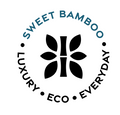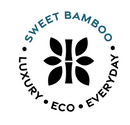The Pros and Cons of Bamboo versus Cotton Children's Clothing
When it comes to choosing fabrics for children's clothing, both cotton fabric and bamboo fabrics are popular options. Cotton is a more traditional fabric that is durable and readily available. However, bamboo offers a range of unique benefits. Bamboo clothing is softer and more moisture-wicking than traditional cotton clothing, making it a comfortable option for sensitive young skin. In addition, bamboo is a far more sustainable crop as it grows quickly without pesticides or fertilizers.
Furthermore, planting and cultivating bamboo results in increased capture of carbon dioxide from the atmosphere and can help prevent soil erosion. While bamboo clothing may come with a higher price tag, many parents find it worth the investment for their children's comfort and ethical consumption habits. Of course, every family must ultimately decide which fabric best suits their needs and values.

At a glance - Cotton vs. Bamboo: The Pros and Cons
When choosing fabrics for children's clothing, both cotton and bamboo have their pros and cons. Here's a quick rundown of each material:
Cotton:
+Pros: Affordable, readily available
+Cons: Can be harsh on sensitive skin, not eco-friendly
Bamboo:
+Pros: Moisture-wicking, eco-friendly, softer at a lower thread count
+Cons: More expensive than cotton
Is Bamboo better than cotton?
TLDR, the answer to this question depends on your priorities as a consumer. Cotton is a good option if you're looking for a durable, affordable fabric. Bamboo is better if you're looking for a more sustainable and gentle fabric on sensitive skin. Ultimately, the decision comes down to what is most important to you and your family.
Cotton vs. bamboo - which is more breathable?
Bamboo and cotton fabrics are both naturally breathable because they are plant-based fabrics. Unlike synthetic fabrics, which can make you sweat faster and cause skin irritation to those with sensitive skin, bamboo and cotton fabrics will help to keep you cool and comfortable.
Despite its breathability, Cotton is naturally more absorbent than Bamboo. During a hot summer day, cotton clothes will feel light and airy and is an excellent option for clothing, but due to their more absorbent nature, they will retain more sweat than Bamboo.
That is why a lot of athletic apparel is made from bamboo. It has the benefits of being breathable while also being able to wick away sweat due to the bamboo fibers - resulting in cooler and more comfortable bamboo clothing, even in humid conditions.

Is cotton or bamboo more expensive?
Cotton is a highly versatile fiber that is relatively inexpensive to produce, making it a popular choice for many textiles. Another factor contributing to cotton's lower cost is its extensive supply chain. Cotton can be grown in a wide range of countries worldwide, which means that it can be produced at scale and sold at low prices. In contrast, bamboo tends to be harvested in only a few locations, limiting its availability and driving up costs.
Overall, the combination of easy cultivation, global supply chains, and high demand makes cotton an attractive option for textile producers looking for a cheap but reliable source of raw materials.
Therefore cotton is the least expensive option between the two.
Is bamboo more sustainable than cotton?
Yes, bamboo is a more sustainable and eco-friendly crop than cotton. The cotton plant is a water-intensive crop that requires large amounts of pesticides and fertilizers to grow. In contrast, bamboo is a fast-growing grass that requires little to no irrigation and very few chemicals to thrive. As a result, bamboo production has far less of an impact on the environment than cotton production.
In addition, bamboo is a highly renewable resource. Cotton plants take multiple months to mature, while bamboo plants continue to grow multiple inches daily. This means that bamboo can be harvested multiple times per year, providing farmers a consistent and sustainable source of income.
But what good is a sustainable, earth-conscious crop if the process of creating bamboo fabric still poses environmental problems?

Two methods to turn bamboo into useable materials are mechanical and chemical. Most bamboo fabrics on the market today are made using the chemical manufacturing process, which involves dissolving pulp and creating rayon. This process uses harsh chemicals and generates much pollution, making it an unsustainable option.
On the other hand, the mechanical method is a far more environmentally friendly way of creating bamboo fabric and is what Sweet Bamboo uses to ensure our products are earth-conscious. This process involves breaking down the bamboo plant into small pieces and then spinning it into yarn. The end result is a soft, sustainable fabric that is gentle on sensitive skin.
Which is softer? Bamboo fabric or cotton fabric?
The softness of both fabrics depends on the thread count. The higher the thread count, the softer the fabric will feel for the most part. But also the higher the cost.
Generally, bamboo fabric achieves more sumptuous softness than cotton at a lower thread count. Most cotton fabric can be just as soft as bamboo, but there’s a tricky balance to strike between a high thread count quality. A higher thread count is more likely to pill if using a low-quality cotton fiber.
The bottom line is that both fabrics can achieve comparable levels of softness, but bamboo often does so at a lower thread count.

Is bamboo safer than cotton for my baby?
The natural fibers of both bamboo and cotton are gentle on the skin, hypoallergenic, and free from harmful chemicals.
When purchasing bamboo products, keep an eye out for items labeled as "bamboo" and not "rayon from bamboo."
Rayon from bamboo is a type of bamboo fabric made using the chemical method instead of the mechanical process. This means that rayon from bamboo is less sustainable, not environmentally friendly, and harmful when compared to genuine bamboo fabric.
Our products are eco-friendly and made with Oeko-Tex-certified fabrics, produced according to US standards - we don't cut corners!
So, when choosing between bamboo and cotton for your baby, both options are great.

Conclusion:
Of course, every family must ultimately decide which fabric best suits their needs and values. For some parents, the affordability and durability of cotton outweigh any potential negatives. Others might prioritize their child's comfort above all else and choose bamboo for its softness and moisture-wicking properties. And still, others might prefer to invest in a sustainable option like bamboo to help reduce their environmental impact.
Our Sweet Bamboo line of children’s and baby clothing is all this and more. Browse our New Releases for your little one - Sweet Bamboo is ethical, sustainable, and made with 100% love.
We hope this guide has been helpful in your decision-making process! Whichever fabric you choose, your little one will look cute and feel comfortable in their new clothes.




Leave a comment